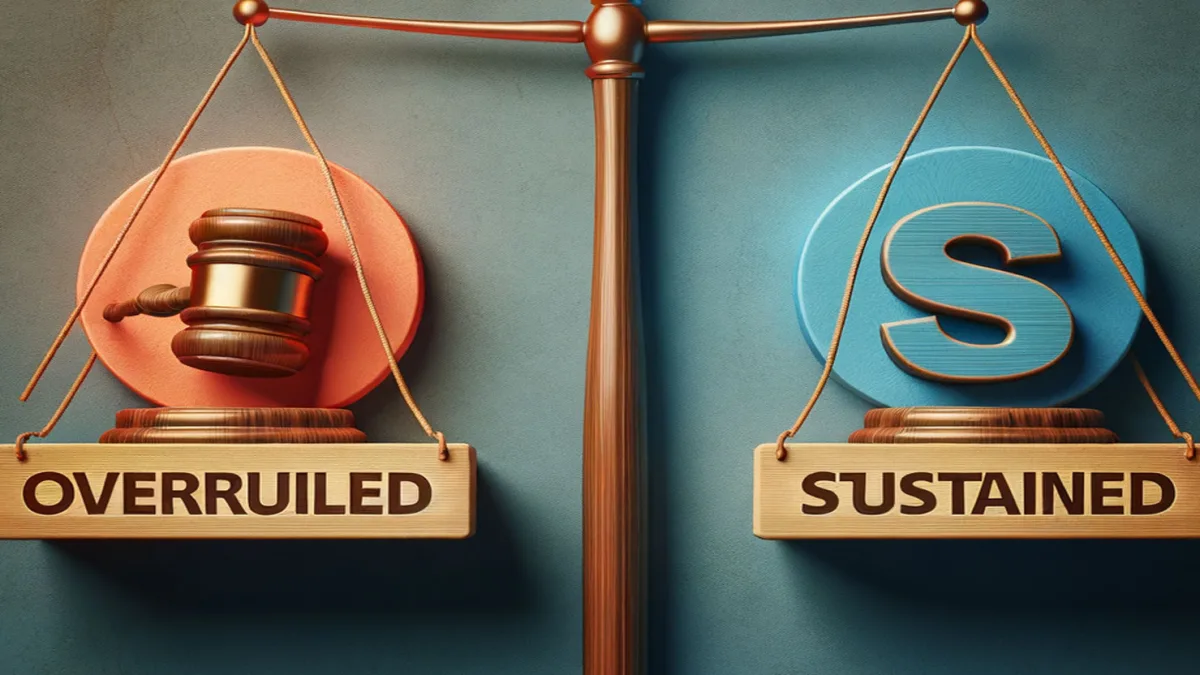Understanding legal jargon can often feel like cracking a secret code. Two terms frequently heard during courtroom proceedings are “overruled” and “sustained.” These words represent rulings made by a judge in response to objections raised during a trial. Let’s dissect what they mean and how they differ.
Overruled
The term “overruled” is the judicial equivalent of “nice try, but no cigar.” When an attorney objects to a question, piece of evidence, or procedure, and the judge says, “overruled,” they’re essentially telling the attorney that their objection doesn’t hold water in this particular court swim meet.
Implications of Overruled Objections
- Proceeding with the Original Action: The action that was objected to will continue as if the objection had never been raised.
- No Change in Trial Course: The trial carries on down the same path, and the jury or judge can consider the evidence or testimony in their deliberations.
Sustained
On the flip side, when a judge utters “sustained,” it’s a green light for the objection. This ruling indicates that the judge agrees with the attorney’s objection and that some aspect of the trial has veered off the straight and narrow.
Implications of Sustained Objections
- Halt in Proceedings: The question, evidence, or process being objected to is stopped in its tracks.
- Exclusion from Record: The jury is typically instructed to disregard the evidence or testimony related to the sustained objection.
Why Do These Rulings Matter?
These rulings are the rudders steering the ship of justice, ensuring that trials adhere to the rules of procedure and evidence. They help maintain a fair trial by preventing irrelevant, prejudicial, or improperly obtained evidence from influencing the outcome.
Factors Judges Consider
When a judge is deciding whether to say “overruled” or “sustained,” they’re not just flipping a coin. They consider several legal factors:
- Relevance: Is the evidence directly related to the case at hand?
- Prejudice vs. Probative Value: Does the evidence’s potential to unfairly sway the jury outweigh its value in proving a point?
- Hearsay Rules: Is the testimony secondhand and, therefore, unreliable?
- Legal Precedent: What have past cases said about similar situations?
The terms “overruled” and “sustained” are pivotal in legal proceedings, helping to ensure a fair trial by upholding the rules of evidence and procedure. Understanding the difference between these rulings provides insight into the judicial process and underscores the role of the judge as the referee of the courtroom.
More infomation
- The Federal Rules of Evidence: https://www.uscourts.gov/rules-policies/current-rules-practice-procedure/federal-rules-evidence
- Legal Information Institute, Cornell Law School: https://www.law.cornell.edu/wex/objection









Leave a Reply